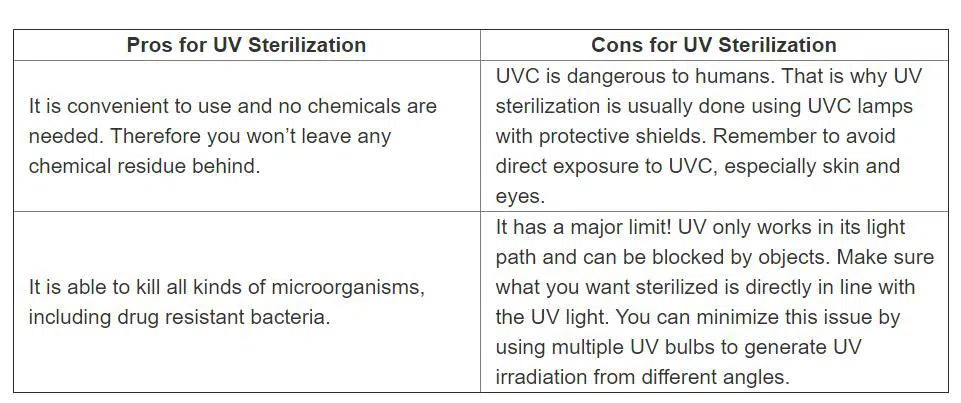English 


Views: 0 Author: Site Editor Publish Time: 2021-02-03 Origin: Site
How effective is UV sterilization? Is it effective against bacteria and viruses? What are the advantages and disadvantages? These are the questions I often hear in the field of microbiology, especially when people think about how dirty their phones are. As more and more UV germicidal products are put on the market, you may wonder if they are worth trying. So, let's delve into it!
Ultraviolet rays have been used for sterilization and disinfection as early as the middle of the 20th century. With the advancement of technology, especially the development of UV bulbs themselves, their reliable long life (thousands of hours) and smaller size (for example, UV LEDs compared to traditional UV bulbs) have expanded their use range. You will find it can be used for disinfection: water, air, fruits, vegetables, surgical appliances, tablets, toys and various surfaces. When UV sterilization is performed, not all UV rays are effective. what does this mean? In order to gain a little technicality, ultraviolet (UV) stands for "beyond violet light" and refers to a series of electromagnetic waves whose wavelength (shorter than the violet light of visible light) (higher frequency and energy).
Ultraviolet rays are divided into three types, with reduced wavelength and increased energy. They are UVA, UVB and UVC. For ultraviolet sterilization, only ultraviolet rays (200-280nm) have enough energy to effectively kill microorganisms. When you buy UV germicidal products to try in your home or business, please make sure that the UV wavelength is within the UVC (200-280 nm) range.
Is UV sterilization effective against viruses and bacteria? The short answer is yes, there are even more creatures. Studies have shown that UVC at 254 nm is effective against all food-borne pathogens, natural microbiota, molds and yeasts. Since the size and shape of microorganisms affect their UV absorption, the time required to kill each species will vary. 2How does ultraviolet light kill bacteria? I am glad you asked! Ultraviolet sterilization is also known as ultraviolet sterilization or ultraviolet germicidal radiation (UVGI). Its function is to destroy certain chemical bonds and disrupt the structure of DNA, RNA and protein, thereby preventing microorganisms from reproducing. When a microorganism cannot reproduce, it is deemed dead because it cannot reproduce in the host and is no longer infectious. "Dead." Sounds perfect. How long does it take to make these annoying things "dead"? Let's talk about the details of destruction. Since ultraviolet sterilization uses the energy of ultraviolet rays to destroy biological molecules, its effectiveness depends on the total energy applied, which is affected by the length of the exposure time and the distance from the light source. For example, if the UV lamp you use is fixed within 1 inch above a petri dish where E. coli is cultivated, it only takes 1-2 minutes to show a complete sterilization effect. 1 It may take 5 to 10 minutes to sterilize surgical instruments in a medium ultraviolet box. In order to disinfect an 8-foot biological safety cabinet in the laboratory, the usual recommendation is 30 minutes. Of course, each sterilization method has its advantages and disadvantages. The following table lists some.

Another limitation of UV sterilization is that UVC causes so much damage to protein and DNA/RNA that they cannot be used in biomedical products. For example, UVC sterilization of viruses can cause great damage to the surface proteins of the viruses, so that they cannot be used as vaccines to induce an appropriate immune response. Another "ultraviolet inactivation" method is used in biomedical products to retain virus surface proteins while effectively inactivating the virus. This is also the method we use to purify virus products for UV inactivation, because we hope to use the complete virus protein of the UV-treated virus for biomedical purposes, such as antibody production. Finally, whether you are looking for a robot to disinfect counters, a magic wand to wave on rough hotel sheets, or a gizmo for disinfecting stinky shoes, UV sterilization is a good choice.
